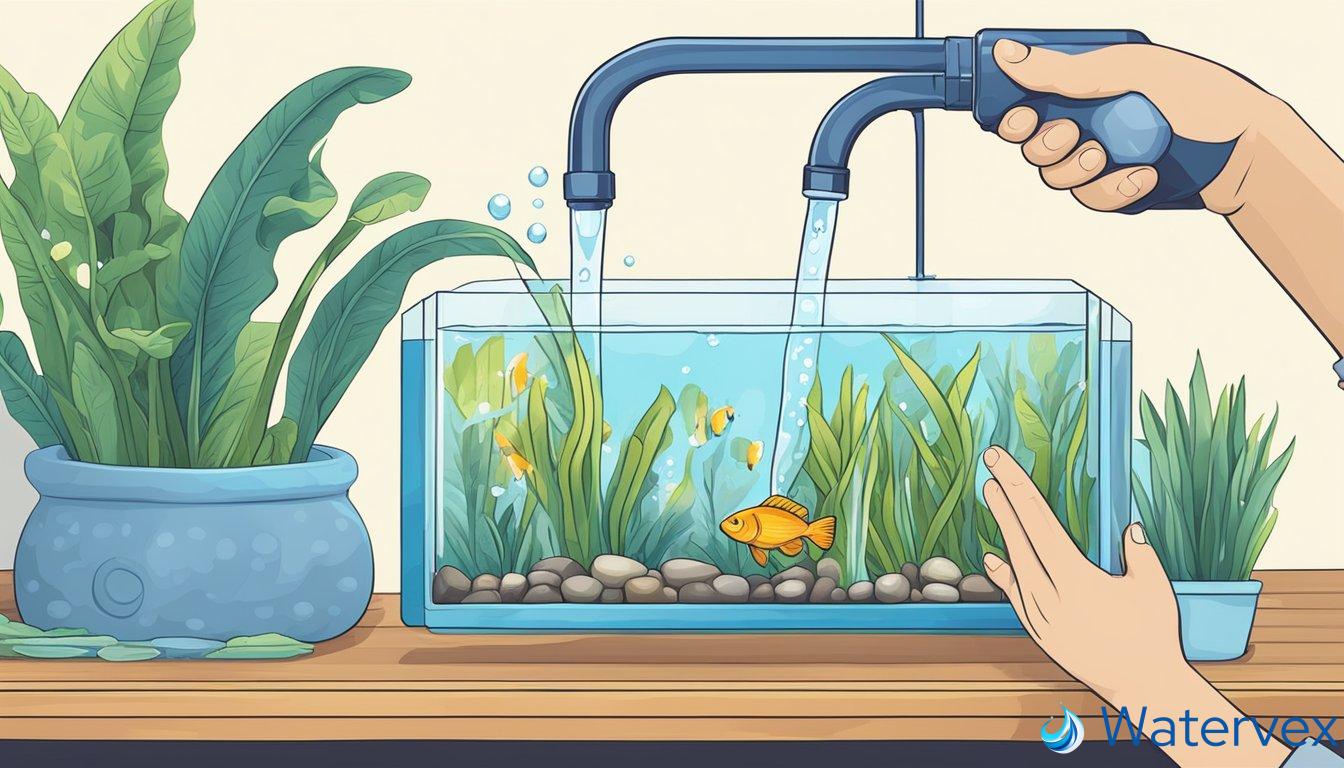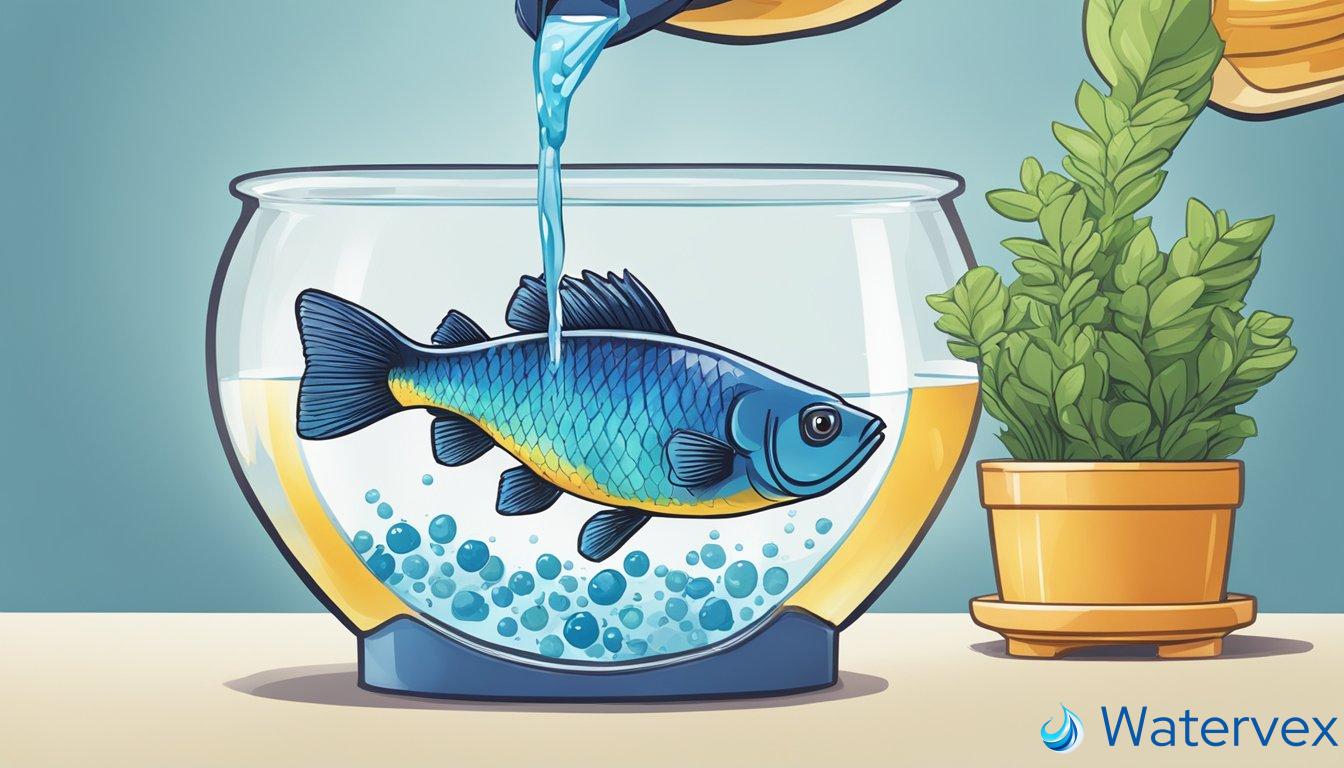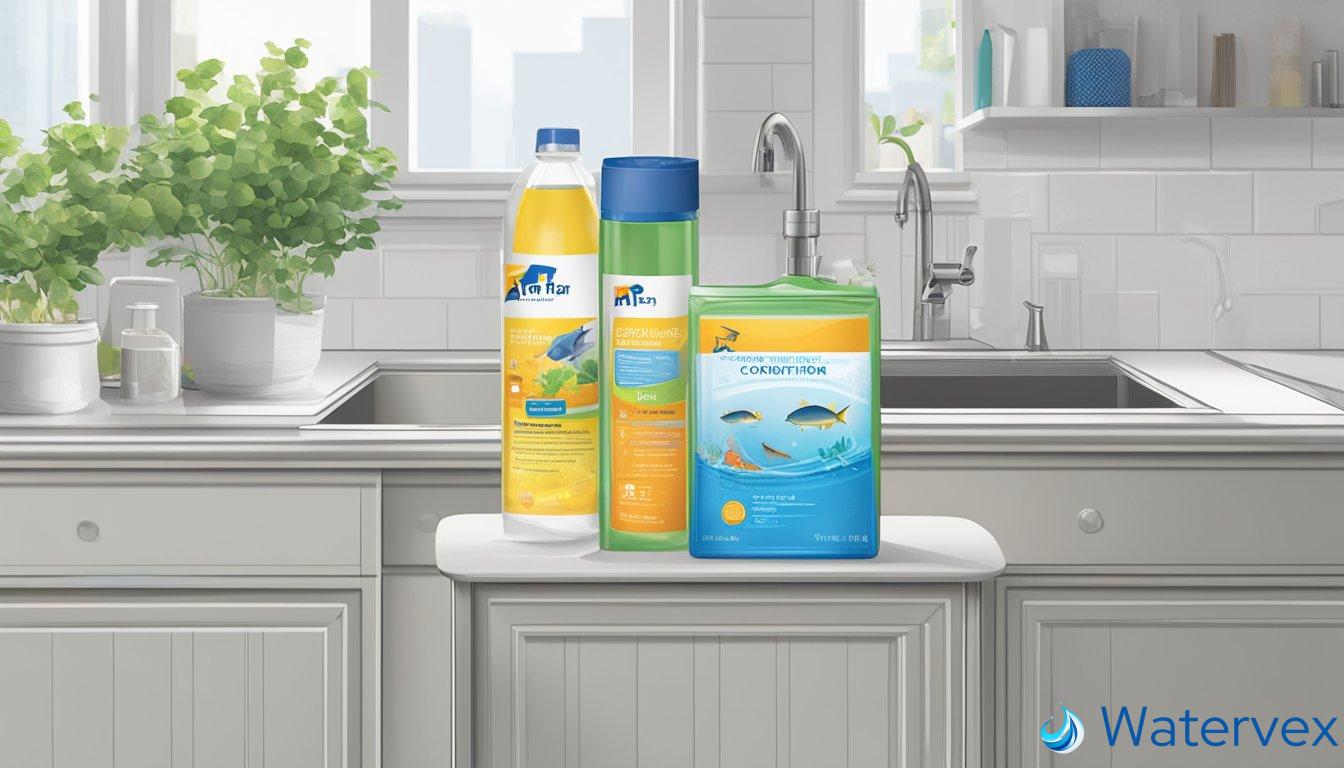Maintaining a healthy environment in your aquarium is crucial for the wellbeing of your fish. API Tap Water Conditioner plays a pivotal role in this process by detoxifying the harmful elements commonly found in tap water. This water conditioner effectively neutralizes chlorine, chloramines, and heavy metals to make your tap water safe for aquatic life. It’s important to understand how to use it correctly to ensure the safety of your fish and support a thriving aquatic ecosystem.

When preparing to add this conditioner to your aquarium, measure the correct dose as per the volume of the water you are treating. The accurate dosing ensures the elimination of the contaminants without harming your fish. Apart from measuring, there are also safety precautions to consider. These include not over-treating the water and making sure the conditioner is thoroughly mixed within the tank before introducing fish to their new, clean environment.
Key Takeaways
- API Tap Water Conditioner neutralizes harmful tap water contents.
- Correct dosage is essential for water safety.
- Safety precautions ensure fish wellbeing.
Understanding API Tap Water Conditioner
API Tap Water Conditioner is a vital tool for maintaining a safe and healthy environment in both freshwater and saltwater aquariums. It effectively detoxifies harmful substances in tap water, ensuring the wellbeing of your aquatic life.
Importance of Water Conditioner in Aquariums
Tap water often contains chlorine, chloramines, and heavy metals that can be harmful to fish. A water conditioner, like the API Tap Water Conditioner, is essential to transform tap water into water that is safe for aquatic life. By neutralizing these toxins, including ammonia, nitrite, and nitrate, it protects the inhabitants of your tank from harmful effects that can lead to stress or illness.
- Key functions of API Tap Water Conditioner:
- Detoxifies chlorine and chloramines
- Neutralizes heavy metals
- Can be used in both freshwater and saltwater environments
When to Use API Water Conditioner
You should use API Tap Water Conditioner during these specific times:
- Setting up a new aquarium: Prior to adding your fish, it is important to treat the tap water to establish a safe space for them.
- After a water change: It’s critical to apply the water conditioner to the new water to remove any potential toxins before mixing with the tank.
- Adding new fish to an existing aquarium: The stress of transport can be minimized by ensuring the new environment is free of harmful contaminants.
Thus, whenever introducing or changing water, API Tap Water Conditioner is your go-to for creating a secure environment for your aquatic friends.
Measuring and Adding API Conditioner

When using API Tap Water Conditioner, precise measurement ensures effective treatment of your tap water, making it safe for both freshwater and saltwater aquariums.
Determining the Correct Amount
To determine the correct amount of conditioner for your aquarium, first check the volume of your tank. API Tap Water Conditioner comes in various sizes such as 8 oz, 4 oz, and 16 oz bottles. Each size has dosage instructions on the label—usually, it’s a certain number of drops or milliliters per gallon of tap water. For example, if you have a 10-gallon tank, and the usage calls for 1 ml per gallon, you’ll need to measure out 10 ml of the conditioner.
Application Process for Different Aquarium Sizes
Small Aquariums (Under 10 gallons):
Add the measured amount directly into the tank before refilling with tap water or into the replacement water if you pre-treated it.Larger Aquariums (Over 10 gallons):
It may be easier to treat the new tap water in a separate container first. After measuring the correct amount of API Tap Water Conditioner, disperse it evenly around the container. Stir to ensure an even mix and then add the treated water to the tank.
Remember, whether you have a small freshwater aquarium or a large saltwater tank, the treatment process is essential to neutralize chlorine, chloramines, and heavy metals present in typical tap water.
Safety Precautions and Usage Tips

When using API Tap Water Conditioner, safety and proper usage are crucial to both human handlers and aquatic life. Here, you’ll find important details on handling the product correctly and treating your aquarium water efficiently.
Handling and Storing the Product Safely
API Tap Water Conditioner is a powerful chemical, formulated to detoxify tap water by neutralizing chlorine, chloramines, and heavy metals for a safer aquatic environment. While beneficial for your tank’s ecosystem, it requires careful handling:
- Keep out of reach of children: Store the conditioner in a secure place, away from the play areas.
- Avoid contact: Handle the bottle with care to prevent skin contact or inhalation of fumes—use gloves if necessary.
- Follow the manufacturer’s instructions: Refer to the label for the correct dosage and apply it with precision to protect your aquarium’s inhabitants.
Best Practices for Treating Your Aquarium
Creating a thriving tank environment with API Tap Water Conditioner involves more than just adding the product to tap water. Here’s how to use it most effectively:
Usually, 1 ml treats 10 gallons of water. Confirm the dosage on the product label and use the dosing calculator from API’s website if available.
When performing a water change:
- First, remove a portion of the tank water.
- Treat the new tap water with API Tap Water Conditioner before adding it to the tank to avoid stress on the fish’s gills and mucous membranes.
- Incorporate other API products such as Stress Coat, Stress Zyme, or Quick Start as needed to further enhance the water quality and maintain beneficial bacteria levels.
For turtles or other sensitive creatures, introduce the conditioner gradually and monitor the animals for any signs of discomfort, as their responses to water changes can be more pronounced.
By adhering to these precautions and tips, you are ensuring the safety of both yourself and your water-dwelling friends, creating a well-balanced aquatic ecosystem where life can flourish.

